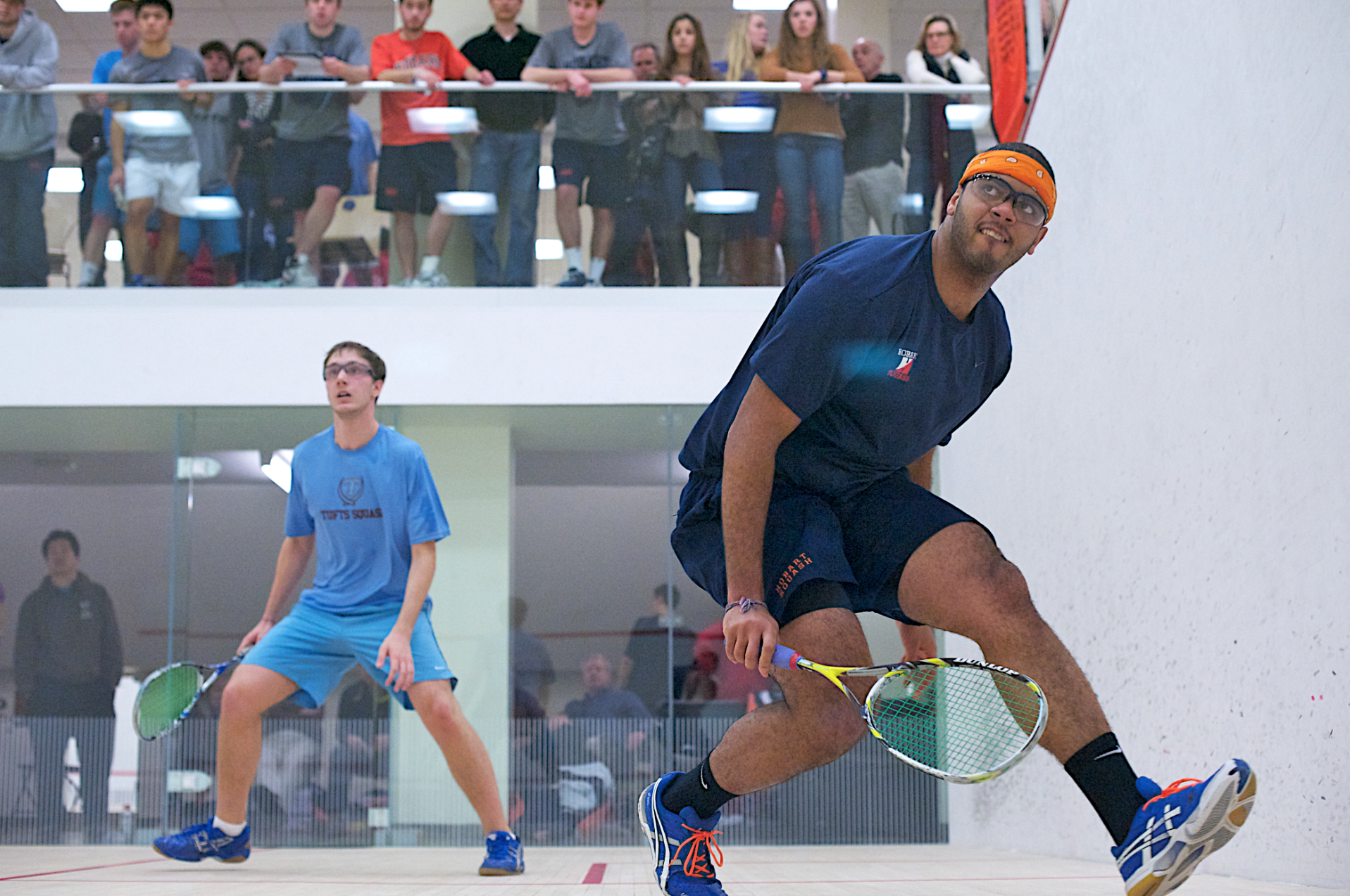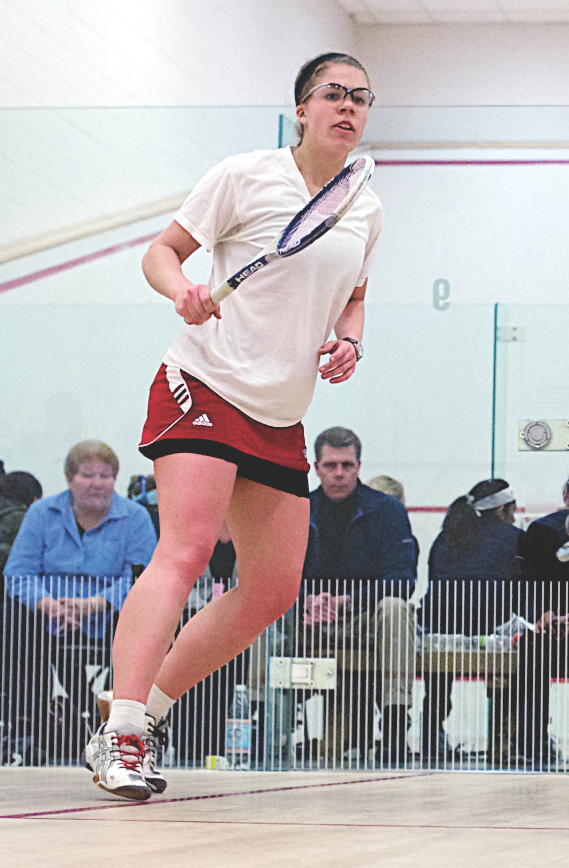By Anne Bello
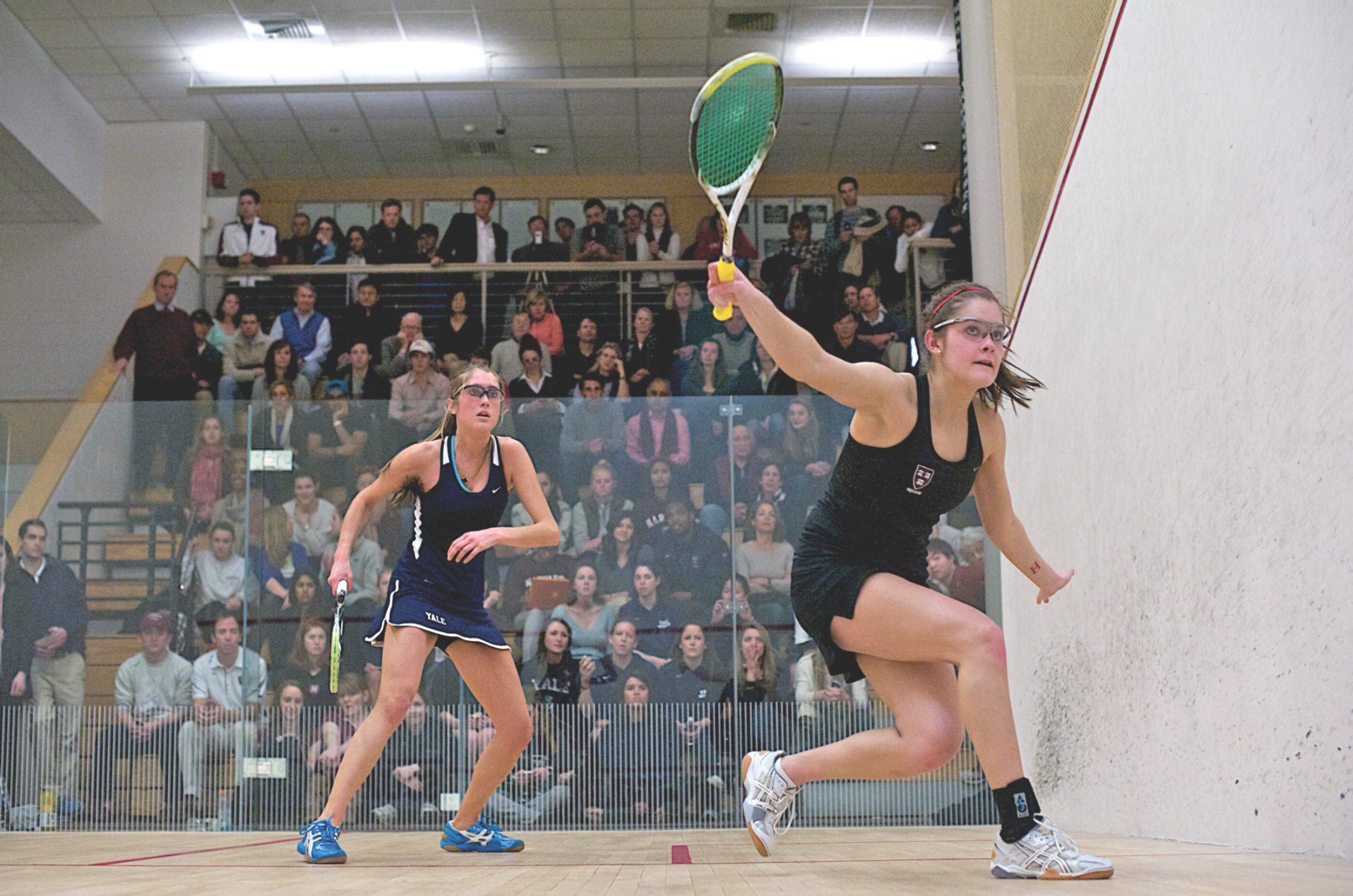
Hours before the men’s A Division final between Princeton University and defending national champions Trinity College was scheduled to begin, a local squash fan camped out on the floor by court 1 in Princeton’s Jadwin Gymnasium, staking out a spot to share with his young son. If history was going to be made that afternoon, they wanted front-row seats.
They weren’t alone.
By the time the match got underway, hundreds of students, families, and fans had crammed into the stands. Those who couldn’t elbow into the standing-room only gallery peered down from windows in the hallway. U.S. SQUASH, the tournament organizers, had set up viewing areas in a room off the squash facility, also broadcasting the action to the JumboTron on the indoor track.
The atmosphere was electric. Students from Trinity had made the trek down from Hartford to watch their Bantams compete for a fourteenth-consecutive national title. The Princeton women’s squash team waved hand-made signs, and two Tigers fans showed their pride by donning fluorescent orange full-body suits.
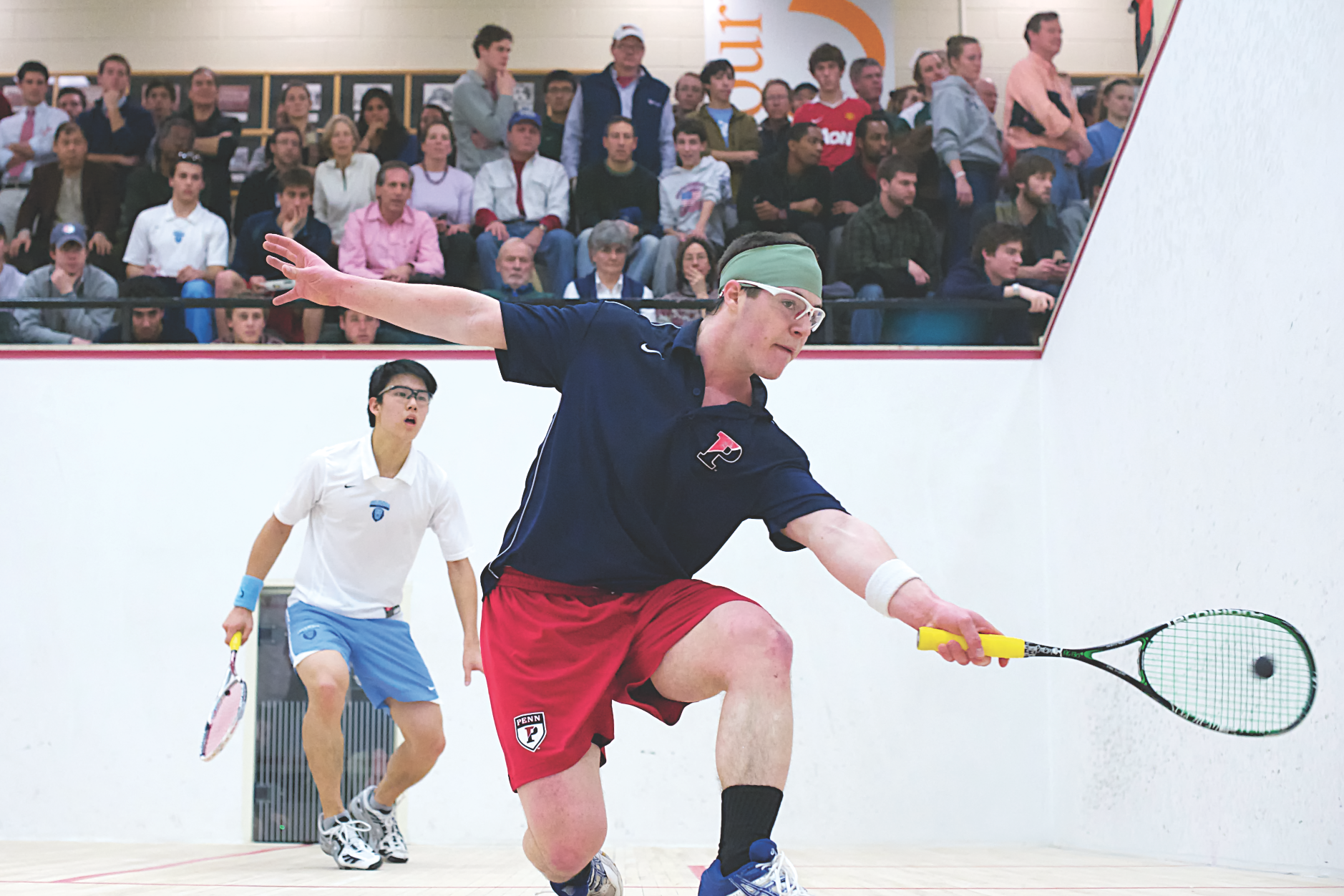
Even fans who were shaky on the rules of squash were aware of the history between the two teams. Every time Princeton had hosted the national championships since Trinity’s unprecedented 252-match winning streak began, the two teams had met in the finals. Each of those titles had been decided by a single individual match. This time Princeton no longer had to worry about the streak, thanks to Yale’s 5-4 win over the Bantams in January, and their season goal—going undefeated at Jadwin—was possible. The Trinity players, however, had no intention of letting go of their title.
The crowd seemed to swell forward, full of anticipation. This was going to be good.
And it was. [As James Zug described in the last issue of Squash Magazine], it was a spectacular final, with Princeton senior Kelly Shannon delivering a three-game win over Trinity’s Reinhold Hergeth to clinch the Tigers’ first national title since 1993. It was the first time since 1998 that a team other than Trinity had won the men’s A Division.
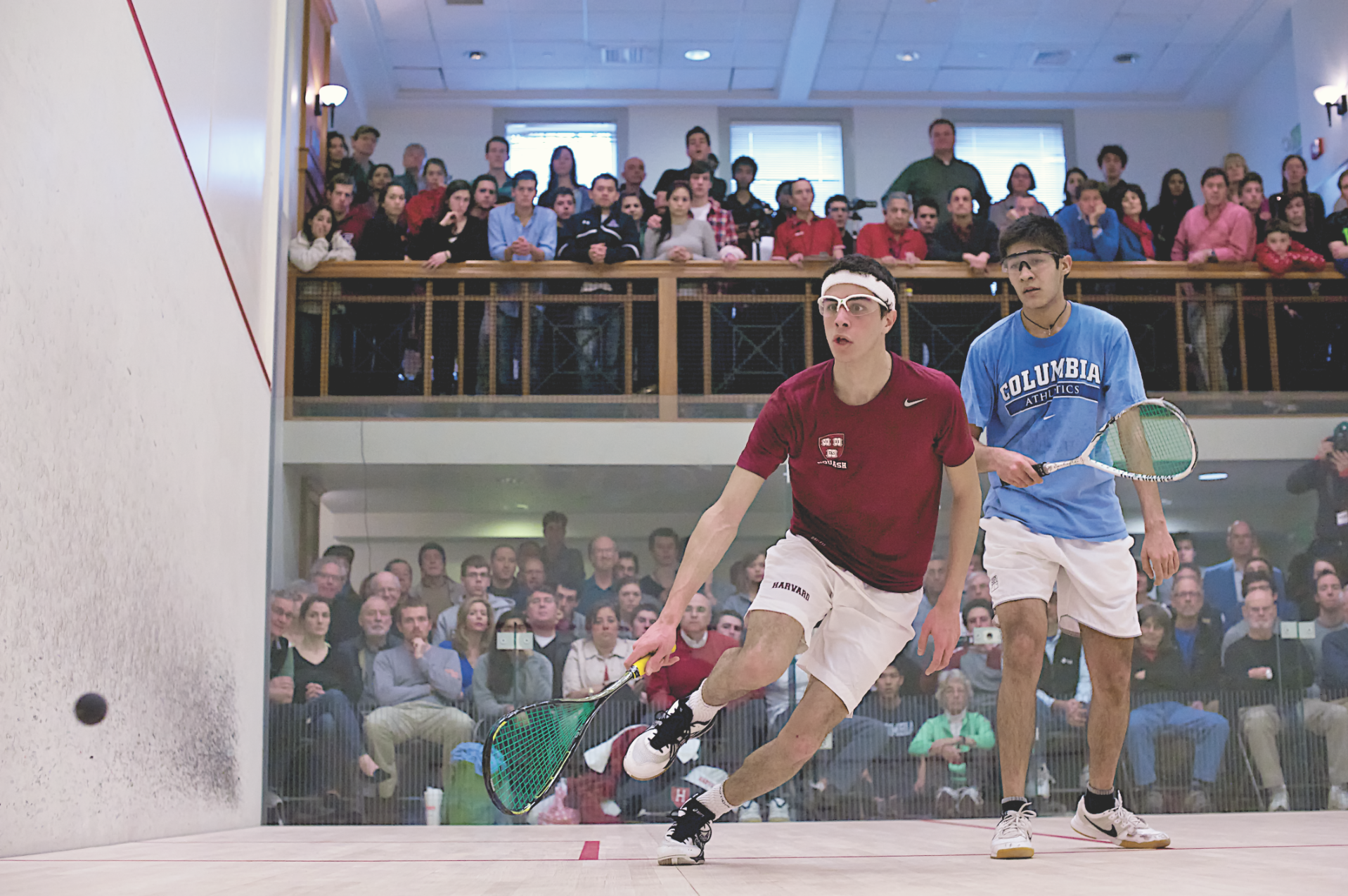
Trinity’s streak has dominated the headlines about college squash for years. After this season, the streak is over, and Trinity no longer has a national title to defend. So what does the future hold for college squash?
There were signs of what may be to come two weeks later at the Individual Championships at Amherst College. Amanda Sobhy, the 2010 Junior World Champion, dispatched 2011 individual champion Millie Tomlinson of Yale in three games in the women’s final. The men’s 2011 individual champion, Todd Harrity of Princeton, didn’t make it past the semis, falling to Columbia freshman Ramit Tandon in three. Tandon went on to lose to Harvard sophomore transfer Ali Farag, himself the 2010 Junior World Championships runner-up, in the men’s final.
Sobhy, Farag, and Tandon have set a new standard of play for the college game. Sobhy was in a class by herself this season, and this year’s final may be only the beginning of an intercollegiate rivalry between Farag and Tandon.
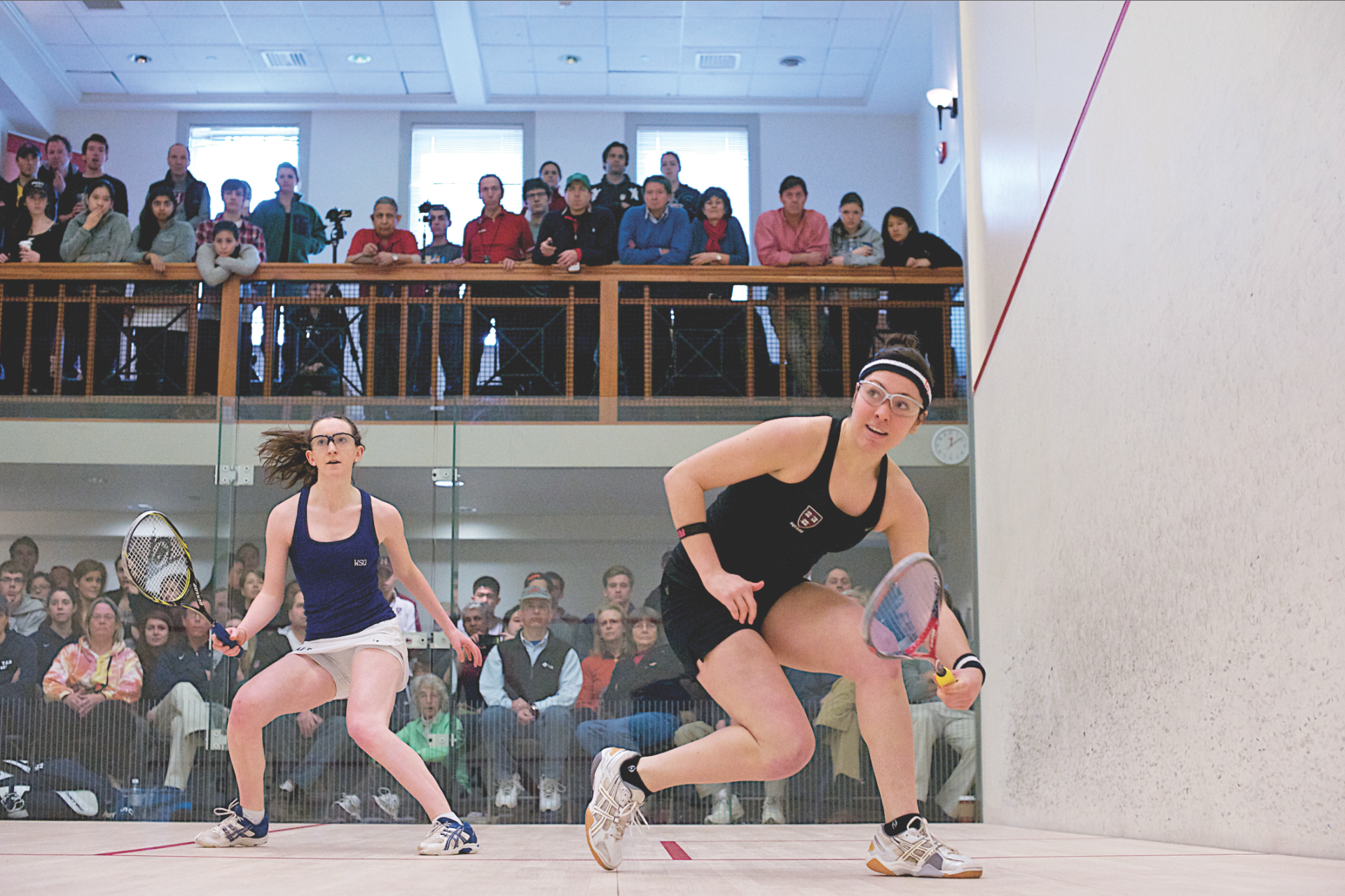
Whether the rest of college squash will rise to a new level of play remains to be seen. Harvard dominated the women’s A Division final against Yale, clinching after only two flights and ultimately winning 8-1. With Sobhy playing No. 1 for Harvard, junior Laura Gemmell—the 2010 individual champion—slid down to No. 2, making the Crimson all the more formidable. Yale had nearly upset Harvard during the regular season, but Harvard was so strong at home, the final felt almost anti-climatic.
Luckily, other divisions supplied plenty of drama. In fact, the B Division final between Brown and Williams was so close it pushed back the start of the A final. With the overall match score tied 4-4, the Kurtz Cup came down to the fifth game of the No. 7 match between Williams’ Hannah Kaemmer and Brown’s Erika Kohnen. Kaemmer and Kohnen were neck-and-neck throughout, pushing the final game to tie-breakers. When Kohnen finally pulled away to win the fifth game 13-11, the Brown senior captain’s teammates swarmed around her, laughing and crying and hugging.
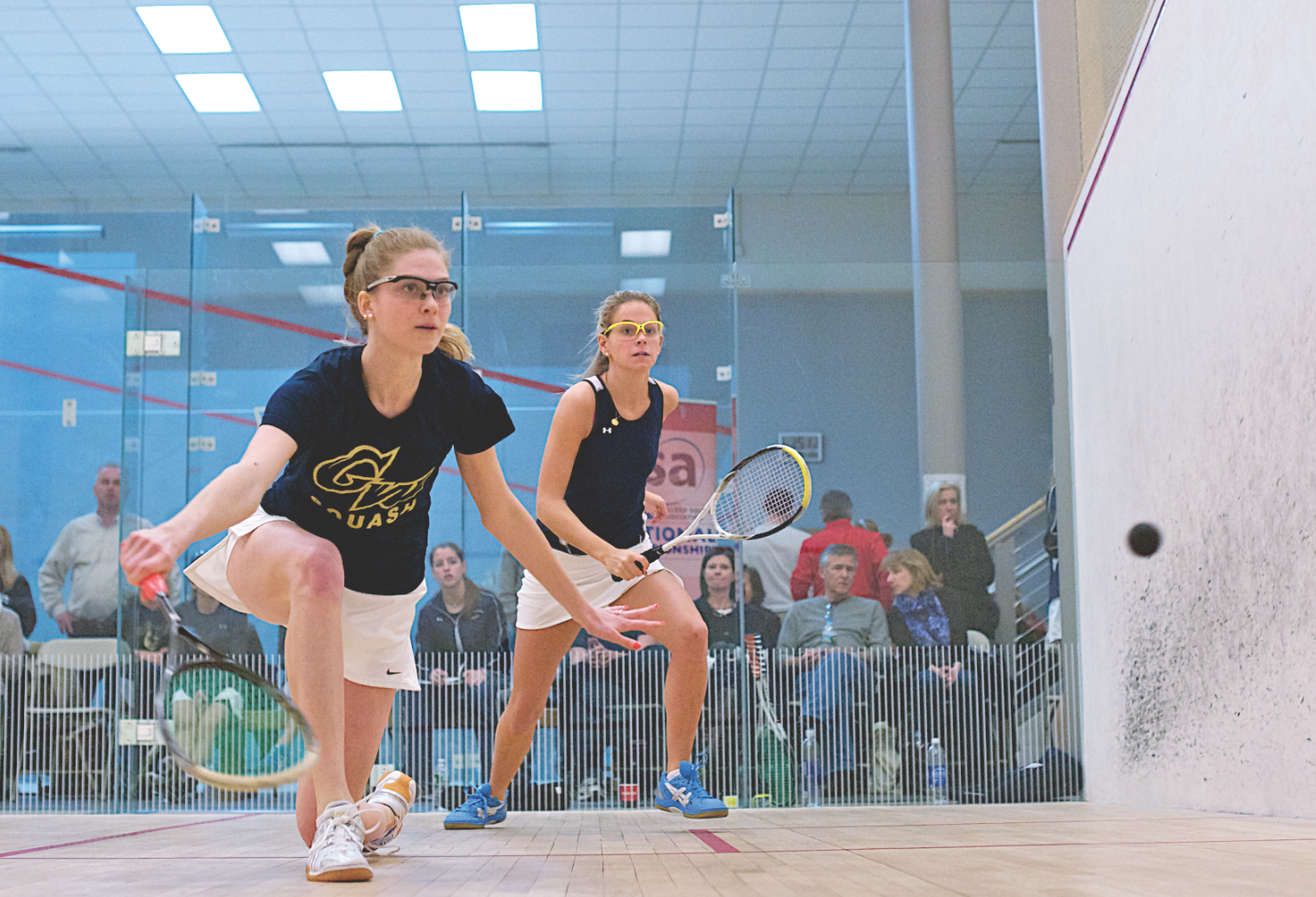
It was a scene that was repeated throughout the weekend as match after match was decided 5-4: when William Smith’s Anne Habecker won in five over St. Lawrence to put the Herons into the D Division finals; when Eunice Zhao defeated Habecker to secure the Epps Cup for Smith; when Danielle Letourneau came back to defeat Pamela Chua in five, putting Cornell ahead of Stanford. There was no shortage of dramatic finishes in the men’s team tournament; among them were Columbia’s 5-4 win over Williams in the B semifinal, guaranteeing the Lions’ highest finish in program history, and Hobart’s 5-4 win over Tufts in the D Division final.
Sometimes friends and families came to watch these matches; sometimes it was just the players who were there. None of them drew the crowds of the Princeton- Trinity final. Yet there is something compelling when a team match comes down to the wire, even if there isn’t a national title—or history—at stake.
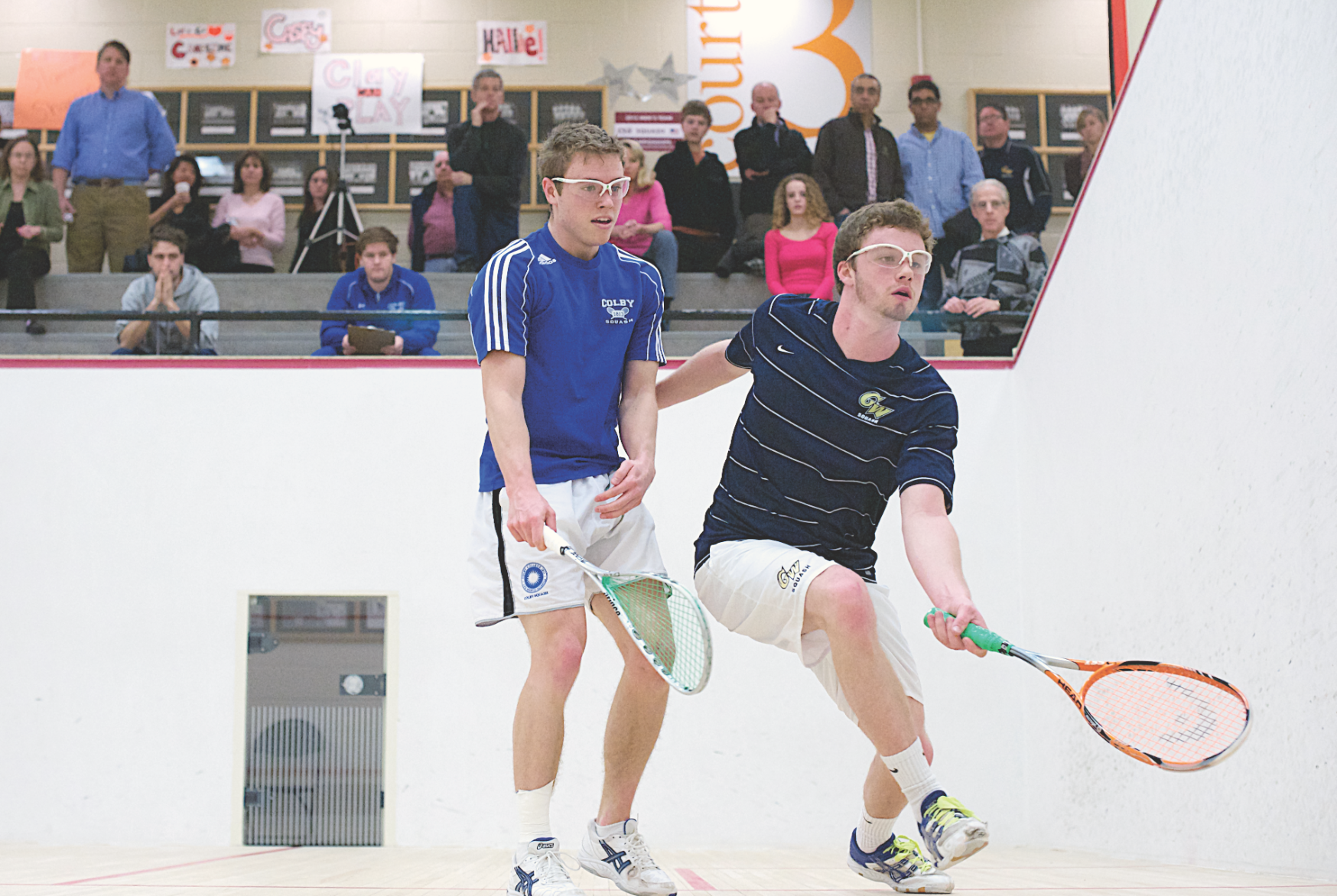
While Trinity’s remarkable feat may have generated the most outside media attention, it’s never been the only story in college squash. The excitement and drama from the team matches are what make the college game special. While the arrival of accomplished, talented players like Sobhy and Farag is noteworthy, college squash at its heart—and its best—is a team sport.
The challenge for college squash going forward is to sustain and adjust to the growth it has seen over the past decade. The days when the entire tournament could be held at a single facility are long gone for the men, and they are numbered for the women. This year the CSA and U.S. SQUASH expanded their partnership, with U.S. SQUASH running the three championship tournaments. Under U.S. SQUASH’s expert direction, the tournaments were noticeably more professional.
The attention in college squash has long been focused at the top, and the Trinity men’s streak brought in interest and excitement to the college game. The Princeton-Trinity Potter Cup final was one for the ages, but as this year’s championships show, the fireworks don’t have to come from the A Divisions.
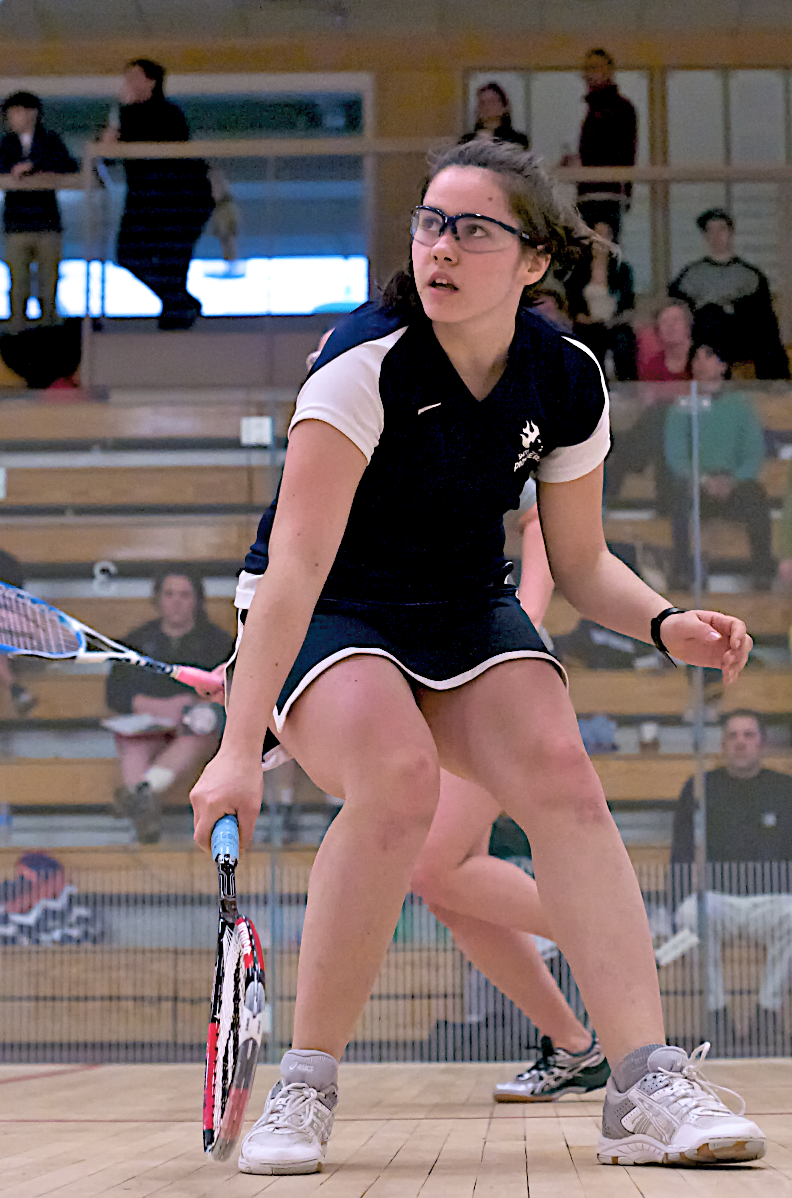
Next year’s men’s and women’s team championships will be hosted by Yale in New Haven. Come early to get the best seats—it’s going to be good.
Men’s National Team Championship Division Winners
Potter Cup (A Division): Princeton University
Hoehn Cup (B Division): University of Pennsylvania
Summers Cup (C Division): George Washington University
Conroy Cup (D Division): Hobart College
Chaffee Cup (E Division): Boston College
Serues Cup (F Division): Haverford College
Hawthorn Cup (G Division): Boston University
Emerging Teams Division: University of Maryland
Women’s National Championship Division Winners
Howe Cup (A Division): Harvard University
Kurtz Cup (B Division): Brown University
Walker Cup (C Division): George Washington University
Epps Cup (D Division): Smith College
E Division: Colgate University
Emerging Teams Division: New York University
Individual Championships
Pool Trophy (Men’s A Division): Ali Farag, Harvard
Ramsay Cup (Women’s A Division): Amanda Sobhy, Harvard
Molloy Cup (Men’s B Division): Vishrab Kotian, Trinity
Holleran Cup (Women’s B Division): Shihui Mao, Yale
